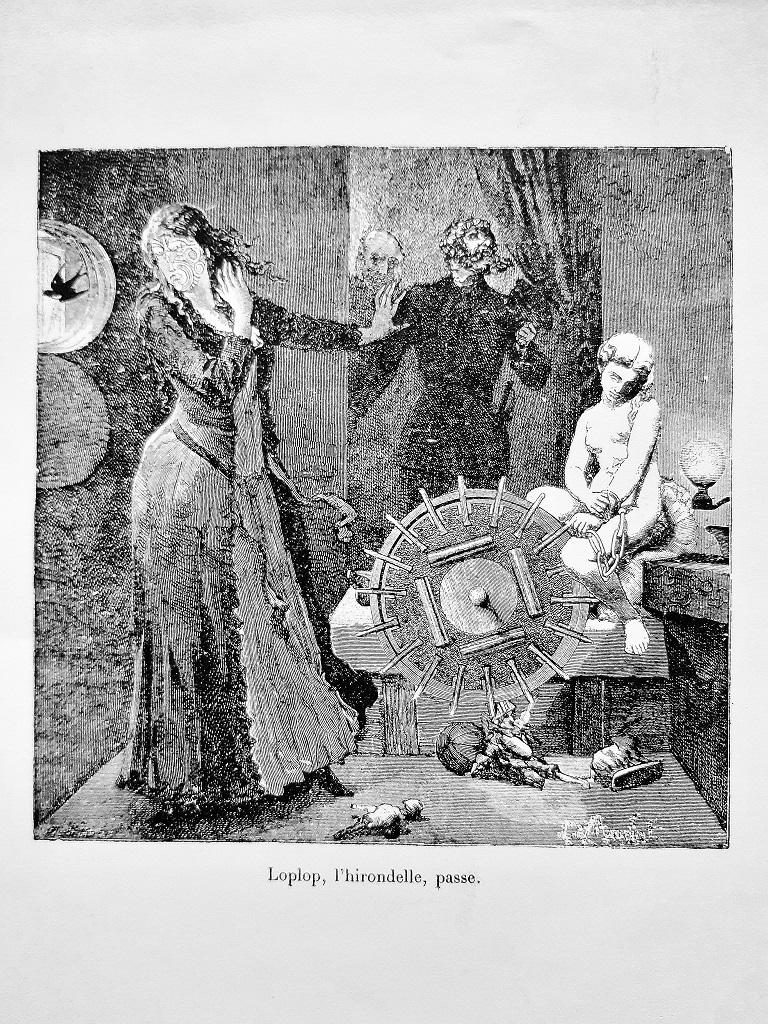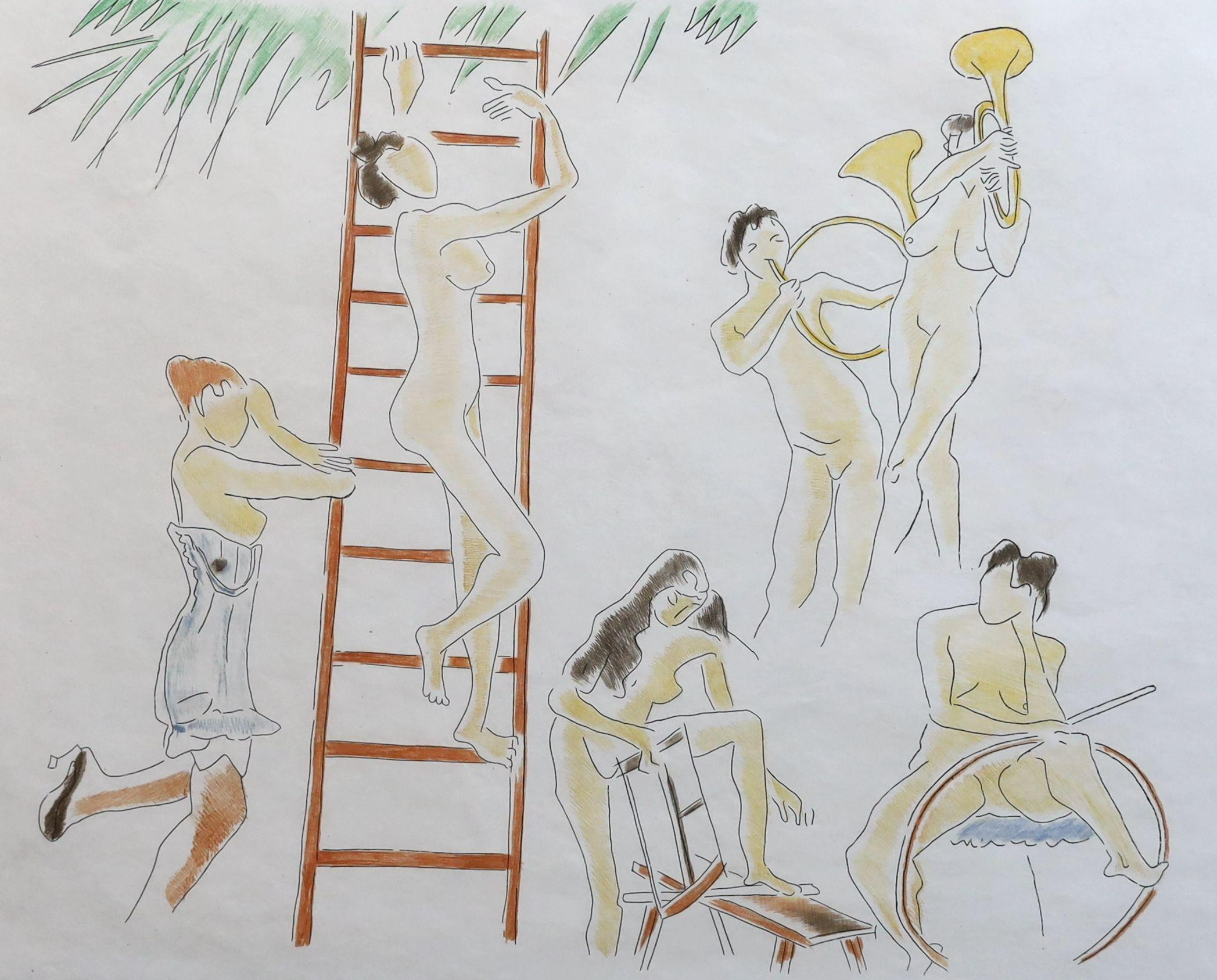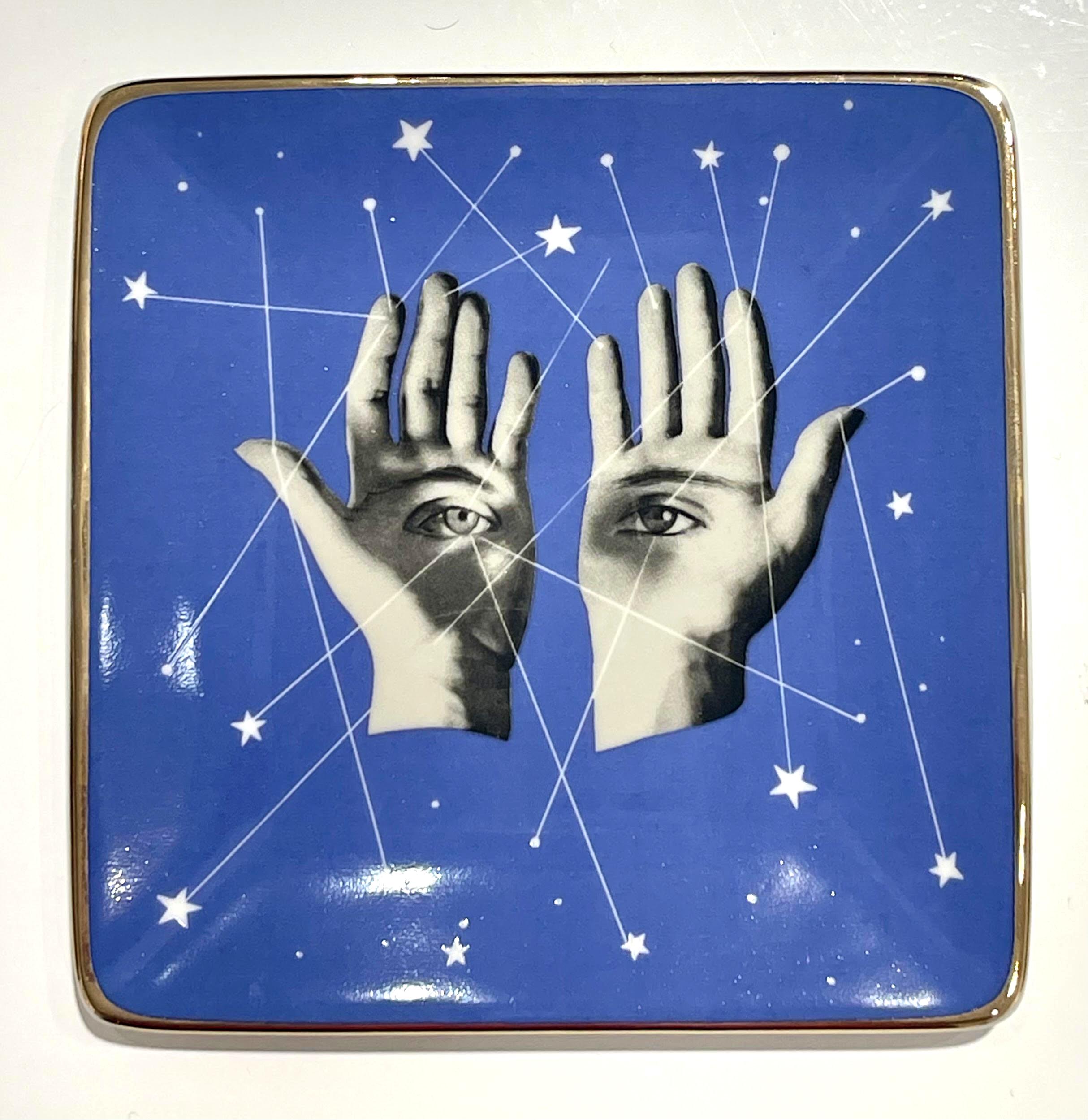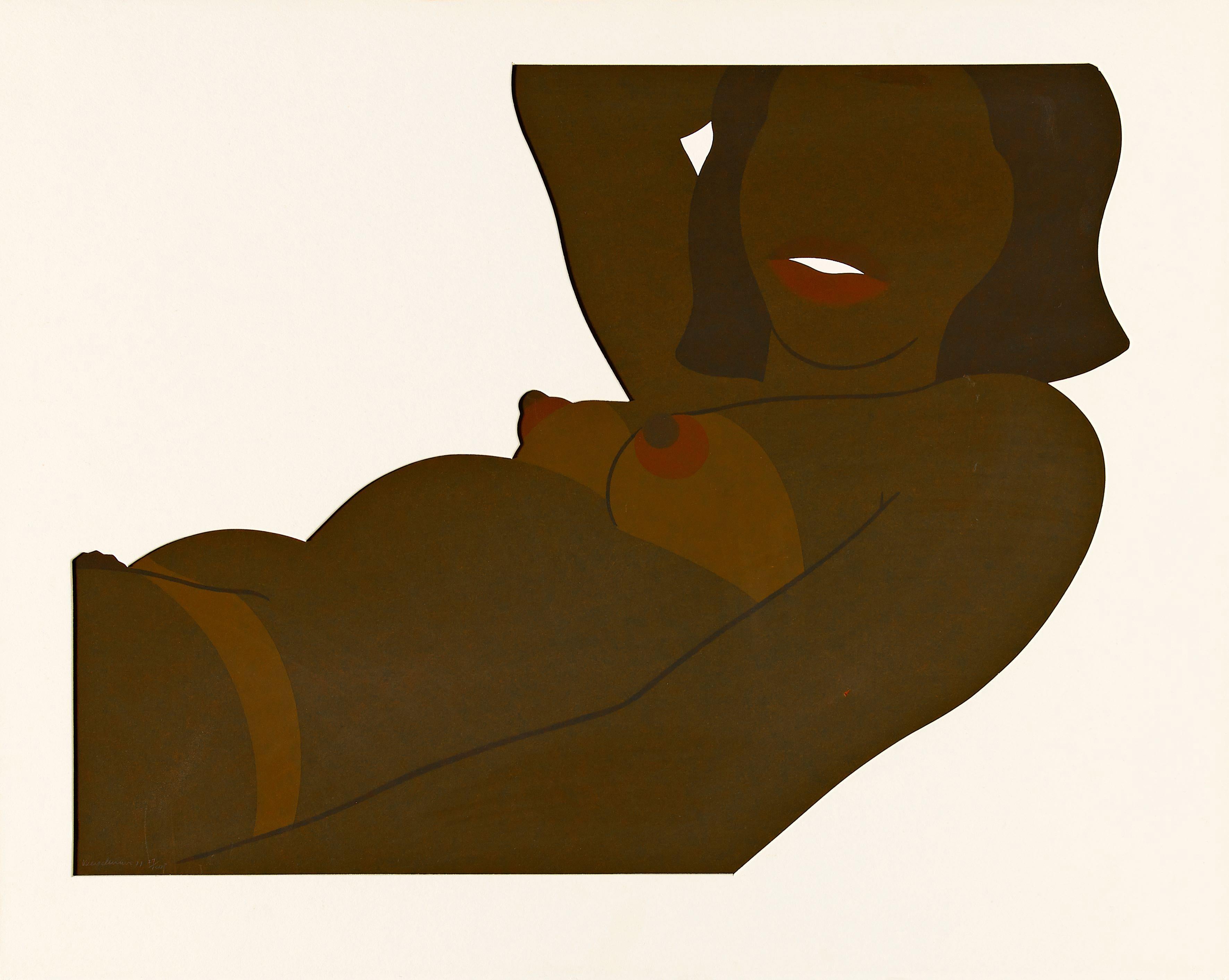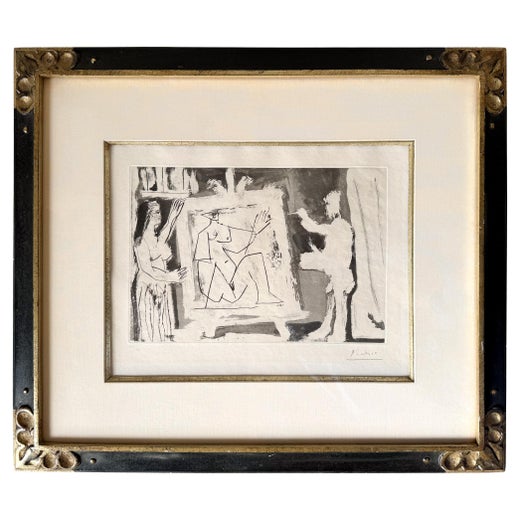Pablo PicassoPablo Picasso, Fluffy-haired Woman, clay plaque1964
1964
About the Item
- Creator:Pablo Picasso (1881-1973, Spanish)
- Creation Year:1964
- Dimensions:Height: 13 in (33.02 cm)Width: 10.25 in (26.04 cm)
- Medium:
- Movement & Style:
- Period:
- Condition:
- Gallery Location:Chatsworth, CA
- Reference Number:1stDibs: LU56133119713
Pablo Picasso
One of the most prolific and revolutionary artists the world has ever seen, Pablo Picasso had a tremendous impact on the development of 20th-century modern art. Although he is best known for his association with the Cubist movement, which he founded with Georges Braque, Picasso’s influence extends to Surrealism, neoclassicism and Expressionism.
“Every act of creation is, first of all, an act of destruction,” the Spanish artist proclaimed. In Picasso's Cubist paintings, he emphasizes the two-dimensionality of the canvas, breaking with conventions regarding perspective, foreshortening and proportion. Picasso was inspired by Iberian and African tribal art. One of his most famous pre-Cubist works is Les Demoiselles d’Avignon (1907), a painting considered immoral and shocking at the time for its depiction of nude women whose faces resemble Iberian tribal masks.
Picasso made many portraits in this style, most often of the women in his life, their expressively colored faces composed of geometric shards of surface planes. In Woman in a Hat (Olga), 1935, he painted his first wife as an assemblage of abstract forms, leaving the viewer to decipher the subject through the contrasting colors and shapes. Picasso was a tireless artist, creating more than 20,000 paintings, drawings, prints, ceramics and sculptures. Tracing his life’s work reveals the progression of modern art, on which he had an unparalleled influence.
Browse an expansive collection of Pablo Picasso's art on 1stDibs.
- ShippingRetrieving quote...Ships From: Chatsworth, CA
- Return PolicyThis item cannot be returned.
- Dalí, "Le Creuset philosophal" from Alchimie des Philosophes, mixed mediaBy Salvador DalíLocated in Chatsworth, CASalvador Dalí "Le Creuset philosophal" from Alchimie des Philosophes Mixed media, from original gouache by Dalí, printed with lithography, etching and sil...Category
1970s Surrealist Figurative Prints
MaterialsEngraving, Lithograph
- Pablo Picasso, "Carnet de la Californie", original lithographBy Pablo PicassoLocated in Chatsworth, CAThis piece is an original crayon lithograph on transfer paper created by Pablo Picasso in 1959. The zinc in this piece has been re-worked with crayon marks and this composition was u...Category
1950s Surrealist Figurative Prints
MaterialsLithograph
- Pablo Picasso, "Scène bacchique au Minotaure" from La Suite Vollard, etchingBy Pablo PicassoLocated in Chatsworth, CAThis piece is an original etching by Pablo Picasso, 1933. It is from "La Suite Vollard", a series made between 1930 and 1939, that was created by Pica...Category
1930s Surrealist Figurative Prints
MaterialsEtching
- Pablo Picasso, "Sculpteur et Modele debout, " etching, hand signedBy Pablo PicassoLocated in Chatsworth, CAArtist: Pablo Picasso Title: Sculpteur et Modele debout Year: 1933 Medium: Original etching Edition: hand signed in pencil from an edition of 250 on small margins Size: Frame: 27 x 2...Category
1930s Surrealist Figurative Prints
MaterialsEtching
- Pablo Picasso, Table des Eaux-Fortes (from Honoré de Balzac, Le Chef-d'Oeuvre)By Pablo PicassoLocated in Chatsworth, CAArtist: Pablo Picasso Title: Table des Eaux-Fortes (from Honoré de Balzac, Le Chef-d'Oeuvre Inconnu) Year: 1931 Medium: Original etching Edition: ha...Category
1930s Surrealist Figurative Prints
MaterialsEtching
- Scene d'Interieur from Le SatiriconBy Jean CocteauLocated in Chatsworth, CAThis piece is original ceramic plate by Jean Cocteau, created in 1961. This piece was embellished with black, red, green, blue, and yellow enamels. In 1957, Cocteau met Marie Madeline Jolly and Philippe Madeline and created over 300 ceramics in their workshop at Villefranche-sur-Mer. At this workshop, he began experimenting with new concepts in pottery design. All these ceramic objects, he said, should look as if they were discovered in an archaeological dig. This piece is from a series of 8 ceramic plates that illustrate the ancient Latin...Category
1960s Modern More Art
MaterialsCeramic
- La Femme 100 Têtes - Rare Book Illustrated by Max Ernst - 1929By Max ErnstLocated in Roma, ITLa Femme 100 Têtes is an original modern rare book illustrated by Max Ernst (1891 - 1976) in 1929, and extraordinary first example of conceptual art Original first edition. Publish...Category
1920s Surrealist Figurative Prints
MaterialsMixed Media, Paper
- "Concert" From "La Ballade des Dames Hors du Temps" Limited Edition LithographBy Man RayLocated in ludlow, GBThis is an incredibly rare and beautiful Limited Edition Etching with Aquatint on Wove Paper by the world famous Man Ray. It is number 1/V from the Catalogue proofs aside from the ed...Category
20th Century Surrealist Figurative Prints
MaterialsLithograph
- Vitraux pour Jérusalem - Illustrated Book by M. Chagall, 1962By Marc ChagallLocated in Roma, IT"Vitraux pour Jerusalem" is one of the most important books illustrated by Marc Chagall and considered as one of his editorial masterpieces. Th...Category
1960s Surrealist More Art
MaterialsPaper, Lithograph
- Things to Come trayBy Herbert BayerLocated in New York, NYHerbert Bayer Things to Come tray, 2018 Porcelain dish with metallic gold edge and silkscreened image Limited edition of an unknown quantity, originally distributed by the Museum of Modern Art, before it sold out. Measurements: Box: 5.5 x 5.5 inches Tray: 5 x 5 inches Provenance: Originally distributed by the Museum of Modern Art, before it sold out Manufacturer: Galison Publishing LLC and The Museum of Modern Art Herbert Bayer biography: Artistic polymath Herbert Bayer was one of the Bauhaus’s most influential students, teachers, and proponents, advocating the integration of all arts throughout his career. Bayer began his studies as an architect in 1919 in Darmstadt. From 1921 to 1923 he attended the Bauhaus in Weimar, studying mural painting with Vasily Kandinsky and typography, creating the Universal alphabet, a typeface consisting of only lowercase letters that would become the signature font of the Bauhaus. Bayer returned to the Bauhaus from 1925 to 1928 (moving in 1926 to Dessau, its second location), working as a teacher of advertising, design, and typography, integrating photographs into graphic compositions. He began making his own photographs in 1928, after leaving the Bauhaus; however, in his years as a teacher the school was a fertile ground for the New Vision photography passionately promoted by his close colleague László Moholy-Nagy, Moholy-Nagy’s students, and his Bauhaus publication Malerei, Photographie, Film (Painting, photography, film). Most of Bayer’s photographs come from the decade 1928–38, when he was based in Berlin working as a commercial artist. They represent his broad approach to art, including graphic views of architecture and carefully crafted montages. In 1938 Bayer emigrated to the United States with an invitation from Alfred H. Barr, Jr., founding director of The Museum of Modern Art, to apply his theories of display to the installation of the exhibition Bauhaus: 1919–28 (1938) at MoMA. Bayer developed this role through close collaboration with Edward Steichen, head of the young Department of Photography, designing the show Road to Victory (1942), which would set the course for Steichen’s influential approach to photography exhibition. Bayer remained in America working as a graphic designer for the remainder of his career. -Courtesy of MOMA More about Herbert Bayer: Herbert Bayer (1900-1985) was born in Austria, where he entered into an apprenticeship under the architect and designer, Georg Smidthammer, with whom Bayer learned drawing, painting, and architectural drafting, inspired by nature and without formal knowledge of art history. In 1920, Bayer discovered the theoretical writings of the artist Vassily Kandinsky, as well as Walter Gropius’ 1919 Bauhaus manifesto, in which Gropius declared the necessity for a return to crafts, in which were found true creativity and inspiration. Bayer traveled to Weimar to meet Gropius in October of 1921 and was immediately accepted into the Bauhaus. There, he was deeply influenced by the instruction of Kandinsky, Johannes Itten and Paul Klee. In 1928 Bayer moved to Berlin together with several members of the Bauhaus staff including Gropius, Moholy-Nagy and Marcel Breuer. He found work as a freelance graphic designer, particularly with German Vogue, under its art director Agha. When the latter returned to Paris, Bayer joined the staff full time, and also worked increasingly with Dorland, the magazine's principle advertising agency. It was in the period from 1928 to his emigration to America in 1938 that he developed his unique vision as an artist, combining a strongly modernist aesthetic sense with a rare ability to convey meaning clearly and directly. This seamless combination of art, craft and design mark Bayer as true prophet of Bauhaus theories. Bayer followed Gropius to America in 1938, and set his breadth of skills to work later that year in designing the landmark Bauhaus 1918-1928 exhibition at the Museum of Modern Art. Bayer flourished in New York as a designer and architect, but it was his meeting with the industrialist Walter Paepcke in 1946 that allowed him to harness his concepts of 'total design' to the postwar boom. Paepcke was developing Aspen as a cultural and intellectual destination, and found in Bayer the perfect collaborator. Bayer was designer, educator and indeed architect for Paepcke's Aspen Institute...Category
2010s Bauhaus More Art
MaterialsMetal
- Great American brown nude cut out Tom Wesselmann Pop Art Figurative Print BoardBy Tom WesselmannLocated in Zug, CHTOM WESSELMANN (1931-2004) Great American brown nude cut out 1971 Color serigraph on museum board 40 x 50 cm 15.75 x 19.69 inches Number 27 of 100Category
Late 20th Century Pop Art Figurative Prints
MaterialsBoard
- Pair of Portraits, Two Ladies, Head of a Young Woman, Demarteau, French, RococcoBy Gilles DemarteauLocated in Greven, DECrayon style colouring after Francois-Andre Vincent. The sheets are a typical example of the highly developed colour printing technique used by Gilles Demarteau and his pupil and nep...Category
18th Century Romantic Figurative Prints
MaterialsHandmade Paper
Recently Viewed
View AllRead More
Science Uncovers Hidden Truths behind Young Pablo Picasso’s Blue Period
From 1901 to 1904, Picasso limited his palette to bluish hues in producing some of his most famous early works. A new show looks at the recycled materials, hidden underpaintings, surprising influences and bohemian lifestyle that led to their creation.
Who Are the Most Popular Artists on 1stdibs?
Learn the stories of some of the world's most recognizable artworks and their makers.
